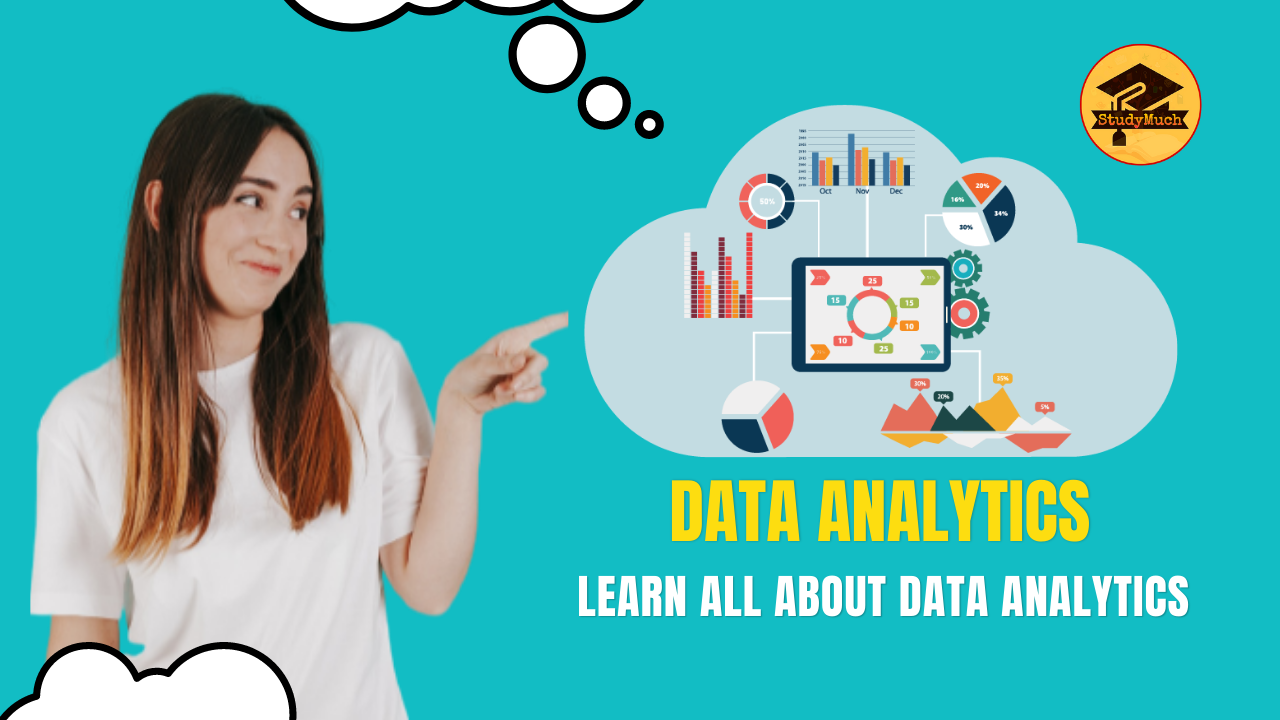What is Data Analytics

What is Data Analytics
Introduction:
In today’s digital age, businesses and organizations are generating vast amounts of data. Data analytics is the process of extracting meaningful insights from this data to make informed decisions.
It has become an integral part of modern businesses and organizations. It is the process of collecting, processing, and analyzing large amounts of data to extract valuable insights, patterns, and trends.
In this blog, we will discuss the what is Data Analytics, its basic and how it works. We will also explore the importance of analytics in modern businesses and organizations.
What is data analytics?
Data analytics is the process of collecting, processing, and analyzing large datasets to uncover insights, patterns, and trends. The goal of data analytics is to transform raw data into actionable insights that can be used to make informed decisions.

Basics of Data Analytics:
It is the process of transforming raw data into actionable insights. The data is collected from various sources, including customer feedback, sales data, social media, and website analytics. The process of analytics can be broken down into several steps.
Data Collection:
The first step in data analytics is to collect relevant data from various sources. This can be done through surveys, social media monitoring tools, website analytics, and other data sources. It is important to collect as much data as possible to ensure that the insights gained from analytics are accurate and meaningful.
Data Cleaning:
Once the data is collected, it must be cleaned and prepared for analysis. This involves removing duplicates, correcting errors, and ensuring data consistency. Data cleaning is a critical step in the data analytics process, as it ensures that the insights gained from the data are accurate.
Data Analysis:
The next step in data analytics is data analysis. There are various techniques used to analyze data, including statistical analysis, data mining, and machine learning. Statistical analysis involves analyzing data to identify patterns, trends, and relationships. Data mining involves using algorithms to extract patterns and insights from large datasets. Machine learning involves training algorithms to make predictions based on historical data.
Data Visualization:
The insights gained from data analysis are then presented in a visual format, such as graphs, charts, and dashboards. Data visualization is an important part of data analytics, as it makes it easier to understand the insights gained from the data.
Decision Making:
Finally, the insights gained from analytics are used to make informed decisions. This can include developing new products, optimizing business processes, and improving customer experience.

Importance of Data Analytics in Modern Businesses and Organizations:
Data analytics has become increasingly important in modern businesses and organizations. Here are some of the reasons why:
Better Decision Making:
Analytics provides businesses and organizations with valuable insights that can inform strategic decision making. By analyzing customer data, sales data, and other data sources, businesses can make informed decisions that can drive business growth and success.
Improved Customer Experience:
By analyzing customer data, businesses can better understand their customers’ needs, preferences, and behavior. This information can be used to improve the customer experience and increase customer loyalty.
Increased Efficiency and Productivity:
It can help businesses identify inefficiencies and areas for improvement. By optimizing business processes, businesses can increase efficiency and productivity, leading to increased profitability.
Competitive Advantage:
Businesses that use analytics to gain insights and make informed decisions have a competitive advantage over those that do not. By analyzing data, businesses can identify trends and opportunities that can help them stay ahead of the competition.
Risk Management:
It can help businesses identify potential risks and develop strategies to mitigate them. By analyzing data, businesses can identify potential risks and take proactive steps to prevent them.

Conclusion:
It is a powerful tool for businesses and organizations in the modern age. By collecting, processing, and analyzing data, businesses can gain valuable insights that can inform strategic decision making, improve the customer experience, increase efficiency and productivity, gain a competitive advantage, and manage risks. As more and more data is generated every day, the importance of analytics will only continue to grow. Businesses that embrace analytics will be better equipped to succeed in today’s competitive marketplace.
So, in tutorial you have learned about the analytics how it work, and also learned analytics in modern businesses and organizations. I hope you learned this well and if you have any doubt about this topic, you can ask in the comment section.
Read Also –



2 Comments
Binance · April 23, 2023 at 4:06 am
Your article helped me a lot, is there any more related content? Thanks!
www.binance.com注册 · November 4, 2024 at 7:11 pm
Can you be more specific about the content of your article? After reading it, I still have some doubts. Hope you can help me.